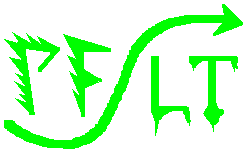History from August 1995

 Clark achieves 50 tesla !! (August 1995)
Clark achieves 50 tesla !! (August 1995)The magnet is internally reinforced with S-glass and was designed under the direction of Fritz Herlach and Luc van Bockstal, and built by Liang Li at the Katholieke University in Leuven, Belgium while Prof. Agosta was visiting last summer. We used two types of wire in the construction, Glidcop for the first eight layers and soft copper for the outer six layers. The magnet also has a 2 cm thick layer of steel ribbon wound on the outside for external reinforcement. We are very grateful to the Leuven group for their help while we were building our capacitor bank and for our first high field magnet described above. Other groups were also very generous to us with either apparatus or advice. Below I first list the people who offered advice to us:
Fritz Herlach and his group at Katholieke University,Leuven, Belgium
Dwight Rickel and Heinrich Boenig, NHMFL, Los Alamos
Greg Boebinger, AT&T Bell Labs
Si Foner and Emanuel Bobrov, FBNML, MIT
And the companies that donated equipment to us:
ASEA Brown Boveri(ABB),
Pittsburgh, PA
ABB Industrial Systems, Inc., New Berlin, WI
Raytheon Co., Lexington,
MA
Amacoil, Inc., Aston, PA
Analog
Devices, Norwood, MA
Our general funding during this period came from the Air Force URI program and the NHMFL.
The pulsed field apparatus will be used to study novel superconducting systems and magnetic materials down to 0.360 K in conjunction with our existing cryogenic apparatus.
Regards from the the group: Dave Howe, Sergei Ivanov, Chuck Mielke, Tom Coffey and Chuck Agosta